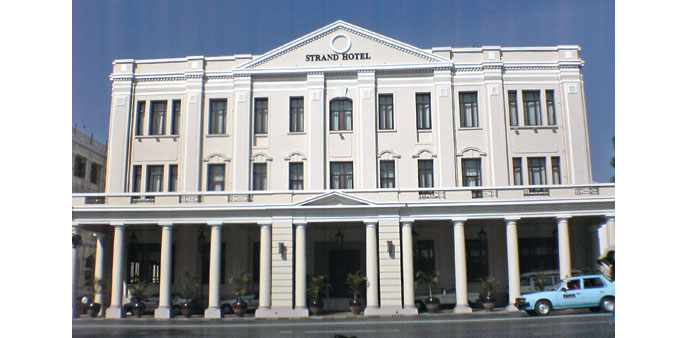By Arno Maierbrugger
Gulf Times Correspondent
Bangkok
The annual “Wealth Report” released by global real estate consultancy Knight Frank on March 5 has an interesting angle: Apart from listing global cities most important for ultra-high net worth individuals (UHNWI, people with a fortune of at least $30mn), it also takes a look at the cities with the biggest potential of becoming an UHNWI location in the future.
The report names four such cities, among them Yangon, the former capital and largest city of the formerly secluded Southeast Asian nation of Myanmar, which has now developed into a bustling economic hub for the newly opened country.
Knight Frank forecasts that the number of high net worth individual (HNWI) residents (people holding at least $1mn in liquid financial assets) in Myanmar is set to more than double over the coming decade, reaching more than $3,500 millionaires by 2024.
“Yangon is a classic example of emerging market wealth creation,” the report says, adding that the city “is benefiting from the gradual opening up of its economy. Following the introduction of democratic reforms in recent years, the city has seen strong employment growth and inward investment, with annual GDP growth at a national level predicted to eclipse that seen in India and even China in 2015 and 2016.”
Yangon, contributing around 20% to Myanmar’s overall economic output, will likely be the biggest beneficiary of the country’s opening process, the report finds. Private investments in businesses such as construction and project development have been one method of gaining exposure to rising property values, and the restaurant, hotel and retail sectors have been improving steadily over the past five years with a number of new international entrants.
Tourism is seen as another driver after a surge of more than 50% in 2014 to over 3mn visitors. Forecasts expect more than 7mn tourists in 2020.
In the “Cities of the Future” list, Yangon comes along with Panama City, a “bridge between Latin and North America” which has seen the number of HNWIs nearly doubling to hit 4,700 between 2007 and 2014; Addis Ababa, capital of Africa’s fastest growing economy Ethiopia with a HNWI population of currently a little over 1,300 and an expected expansion to 2,600 by 2024; and Serbia’s capital Belgrade, accounting for 40% of the country’s economic activity with a HNWI growth potential of 72% from now to 2024, according to Knight Frank.
While the study concedes that none of the mentioned cities yet boasts any billionaire residents, they are locations whose influence Knight Frank believes is growing strongly at a regional level.
“Even if they are unlikely to be on the second-home list of most UHNWIs, they should certainly be on their radars in terms of the wealth creation opportunities they will present,” the report says.
Meanwhile, the world’s most important cities for UHNWI remain London, New York, Hong Kong, Singapore and Shanghai, with the most important Middle Eastern city being Dubai following on rank 8. The top three cities with the greatest expected growth in the number of UHNWI residents between 2014 and 2024 are, again, Hong Kong and Singapore, followed by New York.

Yangon’s iconic Strand Hotel, a meeting place of the rich and famous in colonial times and once one of the most luxurious hotels in the British Empire
